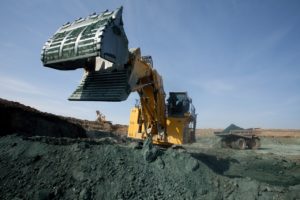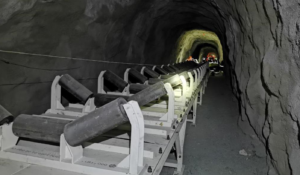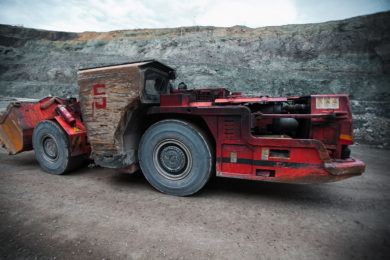Gold, silver and copper miner Polymetal has published its first Climate Change Report, setting a strategic goal to reduce Greenhouse Gas (GHG) emission intensity by 30% by 2030. “Polymetal is fully committed to combat climate change. Today we publicly announce our ambitious 10-year target to cut our GHG emission intensity by 30% by 2030”, said Vitaly Nesis, Group CEO of Polymetal. “This initiative is supported by detailed action plan and becomes a part of the company-wide motivation system.”
In the Climate Change Report 2021, Polymetal commits to the following targets based on the Paris Agreement principles (to be in line with a ‘2 degrees’ trajectory):
- Reduce GHG emission intensity per ounce of gold equivalent by 30% by 2030 (2019 baseline, covering Scopes 1 and 2) including the intermediate target of 15% reduction by 2025.
- Reduce absolute GHG emissions by 35% by 2030.
- Develop long-term GHG reduction goals until 2050 by the end of 2022.
- Develop the plan to achieve carbon neutrality by the end of 2022.
- Set Scope 3 targets by the end of 2022.
To achieve these goals, Polymetal has developed a comprehensive programme that includes a wide range of projects, including:
- Development of own solar and wind power plants at or near Polymetal operations;
- Investment in grid connections to remote assets and procurement of electricity supplies with the lowest available carbon footprint;
- Electrification of mobile mining fleet;
- Continuous improvement of energy efficiency.
Polymetals adds that it is closely following the development of promising low-carbon technologies such as hydrogen energy and fuel cells. It is also looking at ways to reduce carbon footprint by sustaining the natural carbon cycle (reforestation), direct carbon capture, and carbon offsetting.
The company estimates that these projects will require nearly $850 million CAPEX in 2021-2030 to be incurred by Polymetal including $450 million of additional spending not included in the previous Group’s CAPEX guidance. “Our target is to reduce GHG emission intensity per ounce of gold equivalent by 30% by 2030 (2019 baseline, covering Scopes 1 and 2). Since the contractors working at our sites are under our operational control, their emissions are aggregated within our Scope 1 data and thus fall within the perimeter of the established targets. Our targets are aligned with the Paris Agreement to limit global temperature rises to significantly less than 2°C above pre-industrial levels (in accordance with IPCC models and the Absolute Contraction Approach by Science Based Targets initiative.”

The company continues: “Our absolute GHG emission target to reduce gross GHG emissions generated by our producing operations by 35% by 2030 (2019 baseline, covering Scopes 1 and 2) applies to mines operating in 2019, namely Kyzyl, Varvara, Voro, Mayskoye, Omolon, Dukat, Svetloye, Albazino, Amursk POX-1 and 2, and Nezhda. It does not cover future development projects and potential new assets. As stated, we will apply this target only in combination with our intensity target, which more accurately conveys our progress and it therefore our main reporting metric. A phased transition to grid electricity (from diesel generators), engaging with power grid owners and developing our own renewable energy sources alongside efficiency enhancements, will help us meet our absolute target. Upstream and downstream GHG emissions (Scope 3) are not included in current targets. However, as part of our efforts to achieve carbon neutrality, we have requested that key consumables suppliers provide carbon data so that we can further widen Scope 3 reporting across the most material supply chain categories. We are also engaging withcontractors and will set a Scope 3 target by the end of 2022.”
Electrification of mining fleet
Recognising that its mining fleet contributes significantly to its GHG emissions, Polymetal will gradually replace diesel-based vehicles with electric ones. “With the electrification of the mobile fleet, as well as the use of electric-driven ore transportation systems wherever possible, we aim not only to reduce our carbon footprint, but also to improve air quality and reduce noise levels for those working underground or in pits. Our mining fleet electrification programme runs until 2030 and now includes more than 90 units of smart equipment for surface and underground mining. We continue to look for new and innovative technologies that reduce carbon. For example, at Mayskoe, we are piloting an underground electric-driven conveyor ore transportation system, which will reduce emissions from underground mining equipment by 58%.”
The company goes as far as outlining initial timelines for some of the different electric equipment replacements at individual sites which adds up to a very large new battery electric underground fleet in particular
- Dukat: 17 underground loaders and trucks (2021-2026)
- Mayskoye: 2 underground loaders (2022-2028)
- Mayskoye: electric-driven conveyor ore transportation system (2022)
- Albazino: 26 underground loaders and trucks (2021-2026)
- Varvara, Komar and Kyzyl: 13 electro-hydraulic surface excavators (2021-2028)
- Veduga: 23 underground drilling rigs, loaders and trucks (2021-2026)

Renewables adoption
On renewables, Polymetal already has successful experience in the use of solar and wind energy. In 2018, it launched the first 1 MW solar power plant and a 100 kW wind turbine at Svetloye. Now, its programme for the development of electricity generation from renewable energy sources includes the construction by 2025 of six renewable facilities at five sites – at Omolon, Varvara, Kyzyl, Prognoz and Kutyn – with a total capacity of more than 33 MW. “We plan to achieve 7% of total electricity generation from renewable sources by 2025 and 10% by 2030. This will reduce total Scope 1 and 2 emissions by 6% by 2025 and 10% by 2030.”










